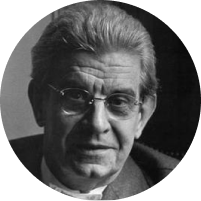« Donc, celui qu’il faut faire parler, à la fin d’une analyse, c’est le patient, et d’abord le patient qui veut faire l’analyste. Voilà l’idée de la passe. [. . .] C’est la méthode de contrôle la plus exigeante qui ait été inventée en psychanalyse. Elle contrôle l’analyste installé, qui sait que son patient peut aller raconter l’histoire de sa cure à un aéropage de confrères. Elle contrôle l’analyste à venir, qui doit étayer sa prétention à se dire psychanalyste. »
Miller J.-A., Comment finissent les analyses. Paradoxes de la passe, Navarin éditeur, 2022, p. 316.
* * *
“So, at the end of an analysis, the one who has to be made to speak is the patient, and first and foremost the patient who wants to be an analyst. This is the idea of the pass. [. . .] It is the most exacting method of supervision [contrôle] that has been invented in psychoanalysis. It supervises the established analyst, who knows that his patient can go and recount the history of his treatment to a learned assembly of colleagues. It supervises the future analyst, who must substantiate his claim to call himself a psychoanalyst.”
Miller J.-A., Comment finissent les analyses. Paradoxes de la passe, Navarin éditeur, 2022, p. 316.
